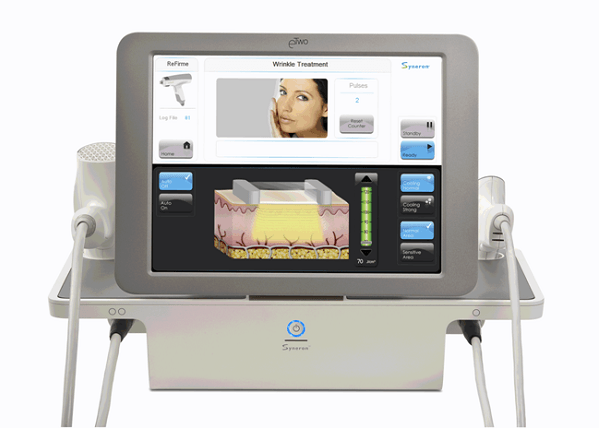How thermal radio frequency can improve the symptoms of this ancient yet rising condition.
Almost five million (23 per cent) of the Australian population currently have acne and more than 85 per cent have had acne at some stage. The figure is increasing largely due to stress, diet and lifestyle. Furthermore, it is not just teenagers who are suffering; half of sufferers are aged over 25 and in their middle and menopausal years.*
Strike rates have nothing to do with family history, skin tone or age. Nor is the disease a blight on personal hygiene standards. Adolescent acne predominantly affects males, in contrast to acne later in life, which predominantly affects females. Acne is indiscriminate. You can get acne as an adult, even if the teenage years didn’t leave a blemish.
According to the International Dermal Institute, no one knows the cause, but chronic stress is certainly a key player. Adult acne can be aggravated by internal and external factors. Internally the psychological effects of adult acne can contribute to flare-ups and breakouts. Just having acne, causes emotional stress which increases activity of the sebaceous glands continuing the cycle of breakouts and ‘picking’ or ‘squeezing’ puts even more acne-causing bacteria on the skin.
About half of the 112 million dollars Australians spend on skin treatment is acne related** and doesn’t include the many commonly prescribed medicines.
“Trial and error treatments are a thing of the past, reducing costs, time and stress for the patient. Acne can be traumatic, so the psychological effect of addressing the disease before it becomes a problem can be life changing,” comments dermatologist Dr Davin Lim.
With so much invested in acne care and treatment, Lim thinks the reason why there is still hazy and conflicting advice and a sea of lotions, treatments, prescriptions and drugs, all promising results but which often deliver very little, is because people don’t understand the science of what acne is.
“Acne is an inflammatory disease of the sebaceous glands in the dermis layer which breaks down and changes the structure and shape of the skin’s collagen. Collagen acts just like scaffolding, when it breaks down the result is a scar or indentation on the dermis or top layer,” he adds.
These scars are either:
- Ice pick scars: Deep pits are the most common
- Box car scars: Angular scars that usually occur on the temple and cheeks, and can be either superficial or deep, these are similar to chickenpox scars.
- Rolling scars: Scars that give the skin a wave-like appearance.
- Hypertrophic scars: Thickened, or keloid scars.
Syneron Candela’s new thermal radio frequency elos sublative technology (below) helps treat the inflammation and remodel early acne scars. This means they treat the cause of disease while simultaneously preventing scars, and at the same time placing acne into remission. Apart from a mild redness, immediately after the treatment – it is claimed there is little or no downtime.
Radio frequency treatment of early acne scars provides a window of opportunity for patients. It can also aid in improving skin tone and elasticity and reduce wrinkles with controlled and predictable outcomes on all skin types. Importantly for the first time, Syneron Candela say darker skins types can also be treated with minimal risks.
With the heritage-style laser technology, outcomes were unpredictable; patients and clinicians alike had no choice but to adopt a wait-and-see approach to ascertain how much damage the inflammation caused and then endeavour to treat it. In contrast, thermal radio frequency technology is reported to work by breaking down abnormal collagen and promoting the formation of new collagen.
Visit www.syndron.candela.com for further information.
*Stathakis,V. Killkenny, M. Mark, R. (1997) Descriptive epidemiology of acne vulgaris in the community. Australasian Journal of Dermatology. 38, 115 / Australian Bureau of Statistics.
**Skincare for calendar year 2006 – value at $1121.3 million source: BUbuAustralia Pty Ltd.



